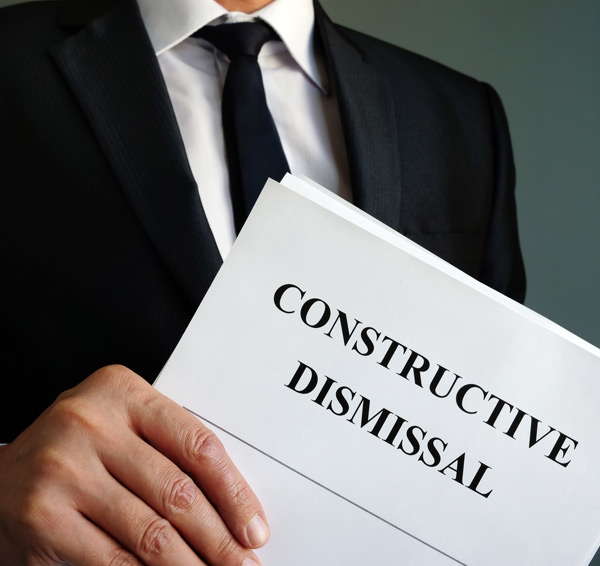Constructive Discharge
In California, employees who resign under extreme or unlawful working conditions may have a legal claim for constructive discharge.

This occurs when an employer makes the work environment so intolerable that a reasonable person would feel they have no choice but to quit.
What Is Constructive Discharge?
Constructive discharge (also called constructive termination) is legally treated as a forced resignation. It applies when an employer creates or allows conditions so hostile, discriminatory, or unlawful that continuing to work would be unreasonable.
The key legal standard: Would a reasonable person in the same situation feel compelled to resign?
Case Results
Common Grounds for a Claim
While not every unpleasant job situation qualifies, the following may support a constructive discharge claim:
based on race, sex, age, disability, or other
protected characteristics
illegal activity
or demotions
management
about unlawful conduct
The misconduct must be severe or pervasive—a single incident is typically not enough unless it is especially egregious.


Legal Framework in California
Constructive discharge is not a standalone claim. It typically serves as the basis for related legal claims, such as:
- Wrongful termination
- Discrimination or harassment under the Fair Employment and Housing Act (FEHA)
- Retaliation for protected activities
- Breach of employment contract
Employees who resign must prove that the employer either intended to force the resignation or knowingly permitted intolerable conditions to continue.
Employee Responsibilities
Before quitting, employees are generally expected to report the issue to HR or a supervisor—unless doing so would be futile or dangerous. Failing to give the employer a chance to correct the situation may weaken a claim.
Potential Remedies
If constructive discharge is proven, an employee may be entitled to:
